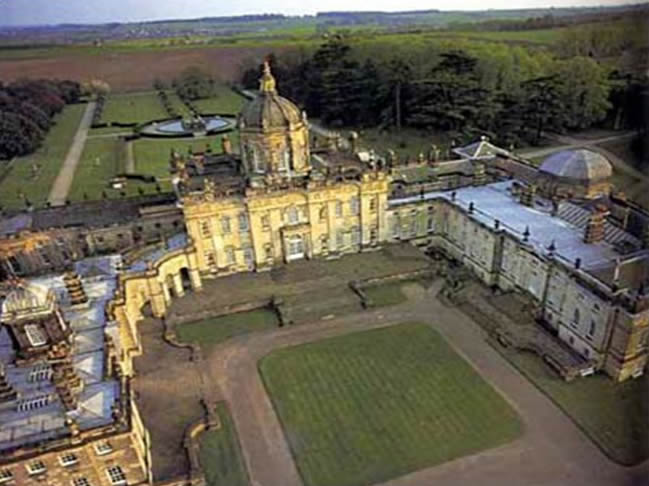
- The scenic spot of Britain
- Architectural decoration
- The buildings of ancient Rome
- Gothic architecture
- Baroque architecture
- Luo Man architecture
- The French Neo classicism architecture
- Renaissance architecture
- Romantic architecture
- Eclecticism architecture
- Classical revival architecture
- Rococo architecture
- Painting and sculpture
- Art performance
- Jewelry, antiques
- Fashion make-up class
- The diet leisure class
- Life Home Furnishing class
- Culture and education
- The folk custom activity
- Event exhibition class
- Add:Teisterbantstraat 44,6825CL Arnhem , Holland
- Tel:+0031-026-7370226
- Fax:+0031-026-7370226
- E-mail:teucaeu@hotmail.com
- Contacts:Mr.Thomas
INTRODUCTION:
文艺复兴建筑是欧洲建筑史上继哥特式建筑之后出现的一种建筑风格。十五世纪产生于意大利,后传播到欧洲其它地区,形成带 了有各自特点的各国文艺复兴建筑。意大利文艺复兴建筑在文艺复兴建筑中占有最重要的位置。 文艺复兴建筑是15-19世纪流行于欧洲的建筑风格,有时也包括巴洛克建筑和古典主义建筑.起源于意大利佛罗伦萨。在理论上以文艺复兴思潮为基础;在造型上排斥象征神权至上的哥特建筑风格,提倡复兴古罗马时期的建筑形式,特别是古典柱式比例,半圆形拱券,以穹隆为中心的建筑形体等。例如,意大利佛罗伦萨美第奇府邸、法国枫丹白露宫、被誉为“欧洲最漂亮的客厅”的威尼斯圣马可广场、维琴察圆厅别墅和等。
The Villa Medici is a mannerist villa and an architectural complex with a garden contiguous with the larger Borghese gardens, on the Pincian Hill next to Trinità dei Monti in Rome, Italy. The Villa Medici, founded by Ferdinando I de' Medici, Grand Duke of Tuscany and now property of the French State[citation needed], has housed the French Academy in Rome since 1803. A musical evocation of its garden fountains features in Ottorino Respighi's Fontane di Roma.
In ancient times, the site of the Villa Medici was part of the gardens of Lucullus, which passed into the hands of the Imperial family with Messalina, who was murdered in the villa.In 1564, when the nephews of Cardinal Giovanni Ricci of Montepulciano acquired the property, it had long been abandoned to viticulture. The sole dwelling was the Casina of Cardinale Marcello Crescenzi, who had maintained a vineyard here and had begun improvements to the villa under the direction of the Florentine Nanni Lippi, who had died however, before work had proceeded far. The new proprietors commissioned Annibale Lippi, the late architect's son, to continue work. Interventions by Michelangelo are a tradition.
In 1576 the property was acquired by Cardinal Ferdinando de' Medici, who finished the structure to designs by Bartolomeo Ammanati. The Villa Medici became at once the first among Medici properties in Rome, intended to give concrete expression to the ascendancy of the Medici among Italian princes and assert their permanent presence in Rome. Under the Cardinal's insistence, Ammanati incorporated into the design Roman bas-reliefs and statues that were coming to sight with almost every spadeful of earth, with the result that the facades of the Villa Medici, as it now was, became a virtual open-air museum. A series of grand gardens recalled the botanical gardens created at Pisa and at Florence by the Cardinal's father Cosimo I de' Medici, sheltered in plantations of pines, cypresses and oaks. Ferdinando de' Medici had a studiolo, a retreat for study and contemplation, built to the north east of the garden above the Aurelian wall. Now these rooms look onto Borghese gardens but would then have had views over the Roman countryside.
These two rooms were only uncovered in 1985 by the restorer Geraldine Albers: the concealing whitewash had protected and conserved the superb fresco decoration carried out by Jacopo Zucchi 1576 and 1577.
Among the striking assemblage of Roman sculptures in the villa were some one hundred seventy pieces bought from two Roman collections that had come together through marriage, the Capranica and the della Valle collections. An engraving detailing the arrangement of statues prior to 1562 was documented by Galassi Alghisi. Three works that arrived at the Villa Medici under Cardinal Fernando, ranked with the most famous in the city: the Niobe Group and the Wrestlers, both discovered in 1583 and immediately purchased by Cardinal Ferdinando, and the Arrotino. When the Cardinal succeeded as Grand Duke of Tuscany in 1587, his elder brother having died, he satisfied himself with plaster copies of his Niobe Group, in full knowledge of the prestige that accrued to the Medici by keeping such a magnificent collection in the European city whose significance far surpassed that of their own capital. The Medici lions were completed in 1598, and the Medici Vase entered the collection at the Villa, followed by the Venus de' Medici by the 1630s; the Medici sculptures were not removed to Florence until the eighteenth century. Then the antiquities from the Villa Medici
formed the nucleus of the collection of antiquities in the Uffizi, and Florence began to figure on the European Grand Tour.
The fountain in the front of the Villa Medici is formed from a red granite vase from ancient Rome. It was designed by Annibale Lippi in 1589. The view from the Villa looking over the fountain towards St Peter's in the distance has been much painted, but the trees in the foreground have now obscured the view.
Like the Villa Borghese that adjoins them, the villa's gardens were far more accessible than the formal palaces such as Palazzo Farnese in the heart of the city. For a century and a half the Villa Medici was one of the most elegant and worldly settings in Rome, the seat of the Grand Dukes' embassy to the Holy See. When the male line of the Medici died out in 1737, the villa passed to the house of Lorraine and, briefly in Napoleonic times, to the Kingdom of Etruria. In this manner Napoleon Bonaparte came into possession of the Villa Medici, which he transferred to the French Academy at Rome. Subsequently it housed the winners of the prestigious Prix de Rome, under distinguished directors including Ingres and Balthus, until the prize was withdrawn in 1968.
In 1656 Christina, Queen of Sweden was said to have fired one of the cannon on top of the Castel Sant'Angelo without aiming it first. The wayward ball hit the villa, destroying one of the Florentine lilies that decorated the facade.
